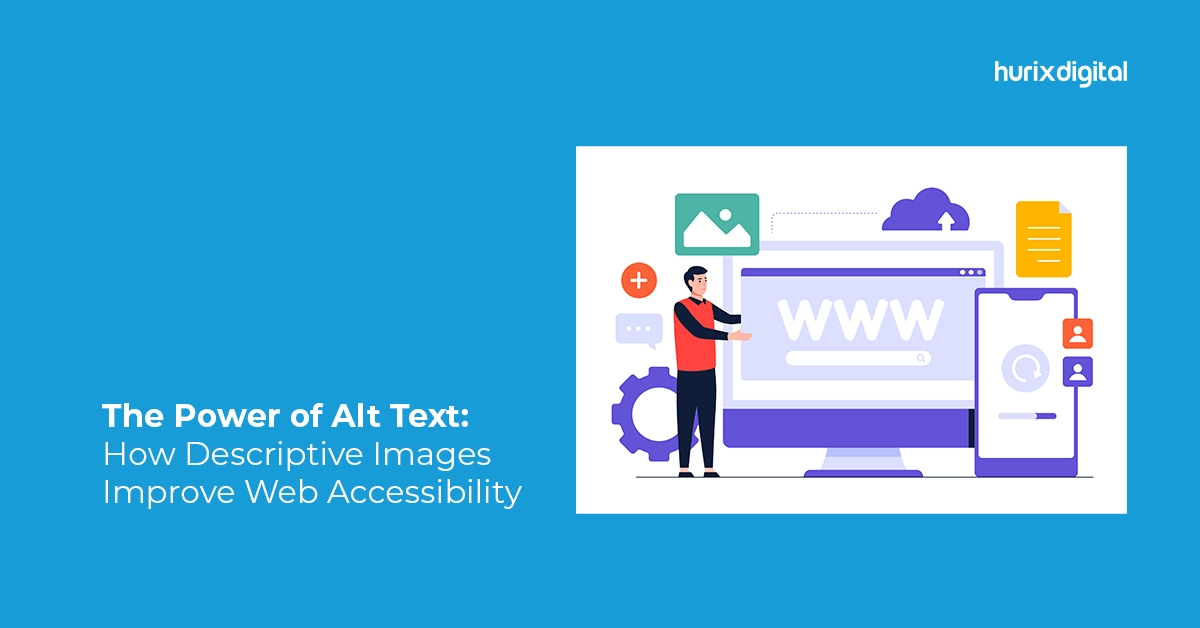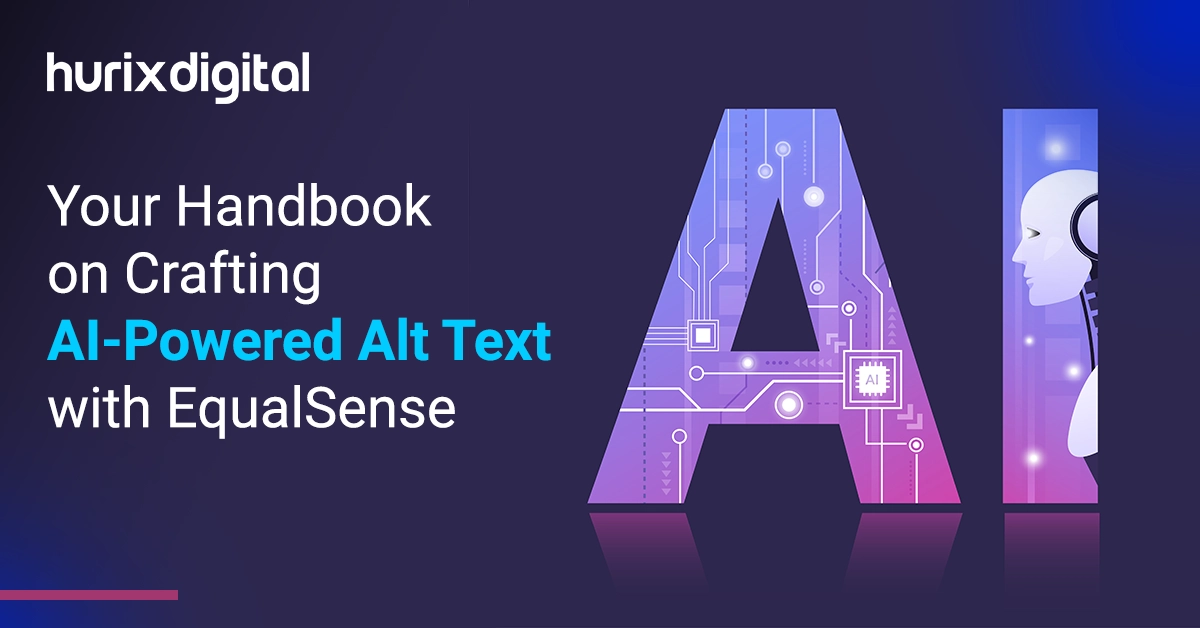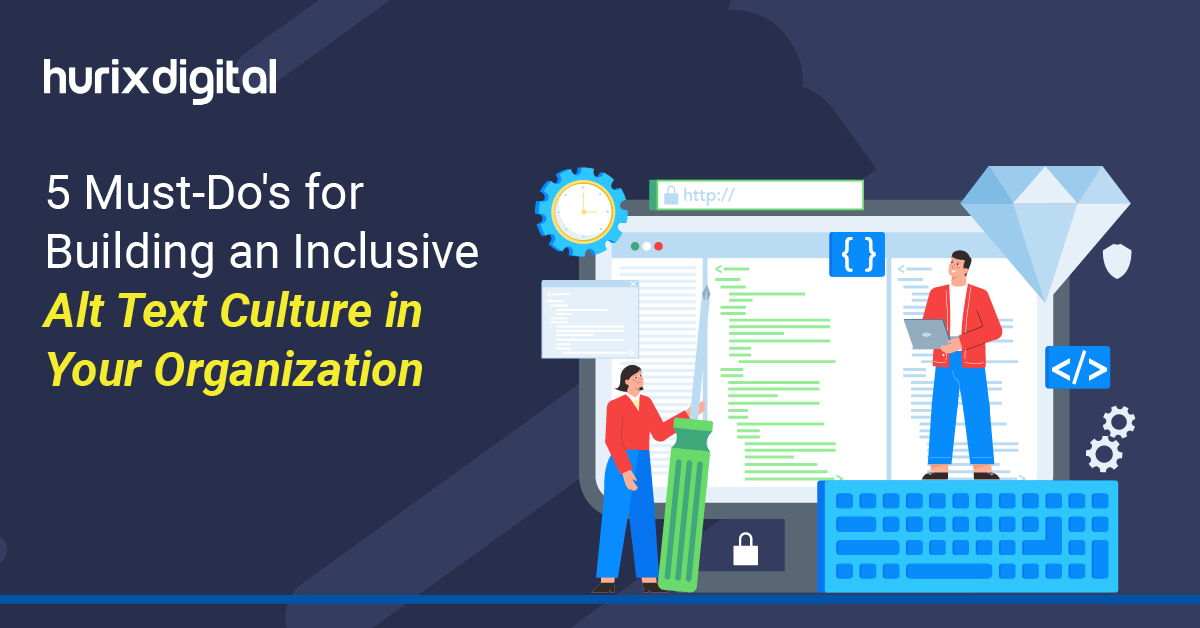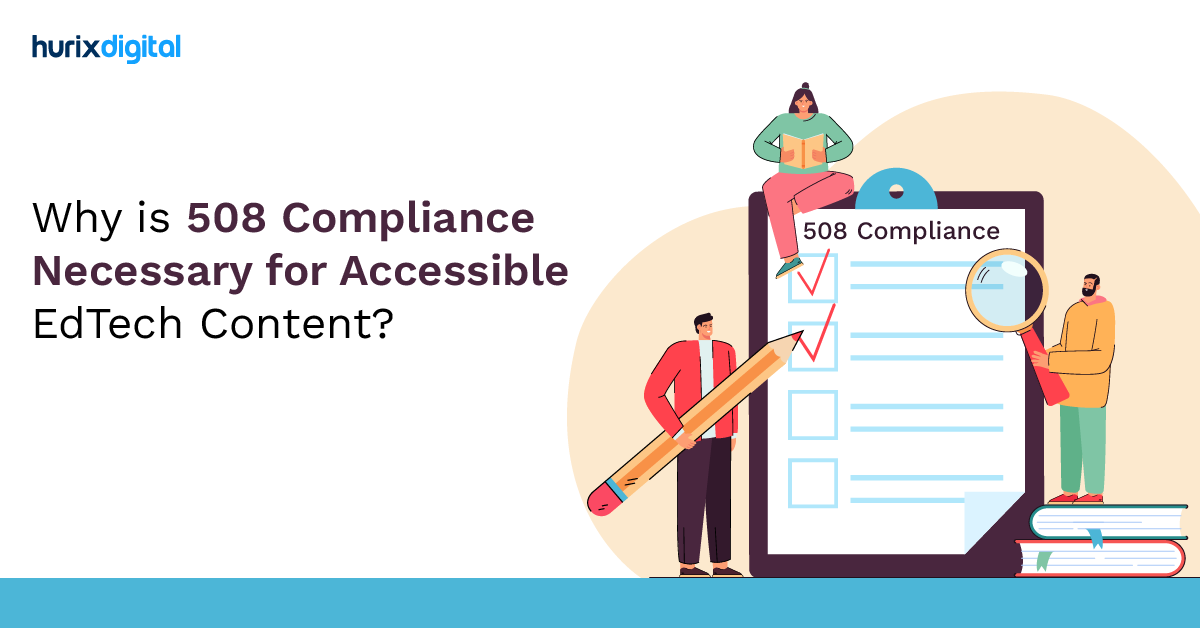
The Power of Alt Text: How Descriptive Images Improve Web Accessibility
Summary
Alt text is an important component of web accessibility and SEO. It is a text description of an image that is read by screen readers and other assistive technologies to help people who are visually impaired understand the content of the image. Alt text also helps search engines index images and improve the visibility of your website in image search results.
In our digital world, pictures are a big deal. They make websites, apps, and social media exciting and informative. But not everyone can see these pictures because of vision problems or disabilities, and that’s where alt text steps in. It’s like the hero that makes the web better for everyone.
In this blog, we’re going to dive into the world of alt text, figure out why it’s awesome, learn how to do it right, and see how it can make the web a cooler and more inclusive place. So, let’s have a coffee and explore “The Power of Alt Text” together.
Also Read: What are Accessibility Solutions? 9 Best Web Accessibility Solutions to Consider
Table of Contents:
- The Significance of Alt Text
- Crafting Effective Alt Text: The Dos and Don’ts
- Best Practices for Alt Text
- Alt Text and Web Accessibility
- The Web as an Inclusive Space
- The Hurix AI Alt Text Generation Tool
- Conclusion
The Significance of Alt Text
Let’s dive into the world of alt text and see why it’s such a game-changer. Alt text, which stands for “alternative text,” also known as image description or image alt, is a vital component of web accessibility and SEO. Alt text for accessibility plays a significant role in ensuring that websites adhere to the guidelines set by WCAG 2.1, It’s a superhero for those who can’t see images, giving them the vital information they need.
Picture this: you’re exploring the web using a screen reader because you’re visually impaired. Alt text steps in to be your trusty sidekick, describing images and making the internet an accessible place for you.
Imagine visiting a website that’s filled with images, from informative infographics to captivating photographs. Now, picture not being able to see any of them. This is the everyday reality for millions of individuals with visual disabilities. Alt text is their bridge to the visual web, helping them understand the content, context, and purpose of images.
Also Read: 15 Web Accessibility Testing Tools and Their Testing Capabilities
Crafting Effective Alt Text: The Dos and Don’ts
Creating effective alt text requires a balance between being informative and concise. Here are some dos and don’ts to consider:
Dos:
- Be Descriptive: Provide a clear and concise description of the image, conveying its content and purpose. For example, instead of saying “image123.jpg,” describe what the image depicts, such as “A golden retriever playing fetch in a park.”
- Context Matters: Consider the context of the image. Sometimes, images are purely decorative and don’t convey essential information. In such cases, use “null” or “decorative” alt text to indicate the image’s purpose.
- Keep It Concise: While being descriptive, keep your alt text succinct. Aim for a few words or a brief sentence that conveys the image’s essence without overwhelming the user.
- Use Punctuation: Punctuation can be a useful tool to separate elements in alt text, making it more comprehensible. For instance, “A woman reading a book on a sunny day in the park.”
Don’ts:
- Avoid Repetition: If an image’s purpose is clear from the surrounding text, there’s no need to repeat that information in the alt text. For example, if the page title already mentions “Golden Retriever Training,” you can use a shorter alt text like “A golden retriever playing fetch.”
- Steer Clear of “Image of…” or “Picture of…”: These phrases are unnecessary and redundant in alt text. Instead of saying “Image of a coffee cup,” go for a more straightforward description like “A coffee cup.”
- Skip the File Name: Alt text is not the place to use the file name of the image. It doesn’t provide any useful information and is typically confusing. “Image123.jpg” doesn’t help anyone understand the image.
- Avoid Overloading: While being descriptive is essential, avoid overwhelming alt text with excessive details that may not be relevant to the user’s understanding of the image.
Also Read: 5 Most Common Web Accessibility Issues to Avoid & Fix
Best Practices for Alt Text
In addition to the dos and don’ts, there are some best practices to keep in mind while creating alt text:
- Avoid Racism and Discriminatory Language: Alt text should never contain racist, discriminatory, or offensive language. Use inclusive and respectful terms.
- Steer Clear of Ableism: Avoid phrases that portray disabilities in a negative light. For example, don’t describe an obstacle as “lame” or “crippled.”
- Don’t Use “Photo of” or “Image of”: These phrases are redundant and should be omitted from alt text. Simply describe the image itself.
- Skip “Picture Showing”: Similar to “Image of,” phrases like “Picture showing” add unnecessary length to alt text. Describe the content directly.
- Use Gender-Neutral Language: When describing people in images, use gender-neutral language unless the person’s gender is relevant to the context.
Alt Text and Web Accessibility
Alt text is more than just a tool for users with visual impairments; it’s a key player in the world of web accessibility. Think of it as the bridge that connects everyone to digital content, regardless of their abilities. When you weave alt text into your web design, you’re not only following the rules of web accessibility but also making the online experience smoother for everyone.
Web accessibility isn’t a fancy add-on; it’s a must-have. Legal requirements like the Americans with Disabilities Act (ADA) and Section 508 of the Rehabilitation Act in the United States make it clear that web content should be accessible to all. Ignoring alt text could land you in hot water, legally speaking. It’s not just about being inclusive; it’s about obeying the law and creating a web that welcomes everyone.
Read more: The Importance of Web Accessibility and How Hurix is Making a Difference
The Web as an Inclusive Space
The web has the potential to be an inclusive space for everyone. With the power of alt text, we’re one step closer to making this a reality. When web developers, content creators, and businesses embrace alt text, they open up a world of information and engagement to users who may otherwise miss out on the rich and diverse content available online.
But alt text is just the beginning. Web accessibility is a multifaceted concept that includes various elements like proper heading structure, keyboard navigation, and the use of labels for form elements. It’s a collective effort to ensure that the web is a place where everyone, regardless of their abilities, can access information, participate, and engage with the digital world. It’s a world where alt text isn’t just a feature; it’s a commitment to creating a more inclusive online environment.
The Hurix AI Alt Text Generation Tool
For web developers and content creators looking to enhance their alt text game, there’s a powerful tool at your disposal. The Hurix AI Alt Text Generation Tool is designed to streamline the alt text creation process. It employs advanced artificial intelligence to analyze images and generate accurate, descriptive imagery for alt text within seconds. Whether you have a vast image library or are continuously adding new visuals to your content, this tool can be a game-changer.
By utilizing the Hurix AI Alt Text Generation Tool, you not only save time but also ensure that your alt text follows best practices. The tool’s AI algorithms are trained to avoid discriminatory language, steer clear of ableism, and provide concise yet descriptive alt text. This not only helps you enhance your web accessibility but also contributes to a more inclusive web for all users.
Conclusion
Alt text is a simple yet potent tool for web accessibility. It’s a step towards making the web more inclusive, informative, and engaging for everyone. By crafting alt text that adheres to best practices, we not only meet legal requirements but also make a commitment to a digital world where no one is left behind.
As we conclude our exploration into “The Power of Alt Text,” let’s reflect on the incredible impact this often-overlooked hero can have in our digital world. It’s not just a feature; it’s a transformational tool that bridges gaps and welcomes all users to the online experience. Alt text is your secret weapon for inclusivity, a key to unlocking the potential of your content, and a boost to your website’s visibility in the vast online landscape.
So, remember, alt text isn’t just a best practice; it’s a powerful game-changer. It’s our collective step towards a more accessible, diverse, and engaging internet for everyone. Here’s to making the web a better place, one alt text at a time!
Feel free to reach out to Hurix Digital to explore how we can help you implement the best alt text practices and enhance web accessibility. Let’s make the web a better place for all users, together.

Vice President – Digital Content Transformation. He is PMP, CSM, and CPACC certified and has 20+ years of experience in Project Management, Delivery Management, and managing the Offshore Development Centre (ODC).







